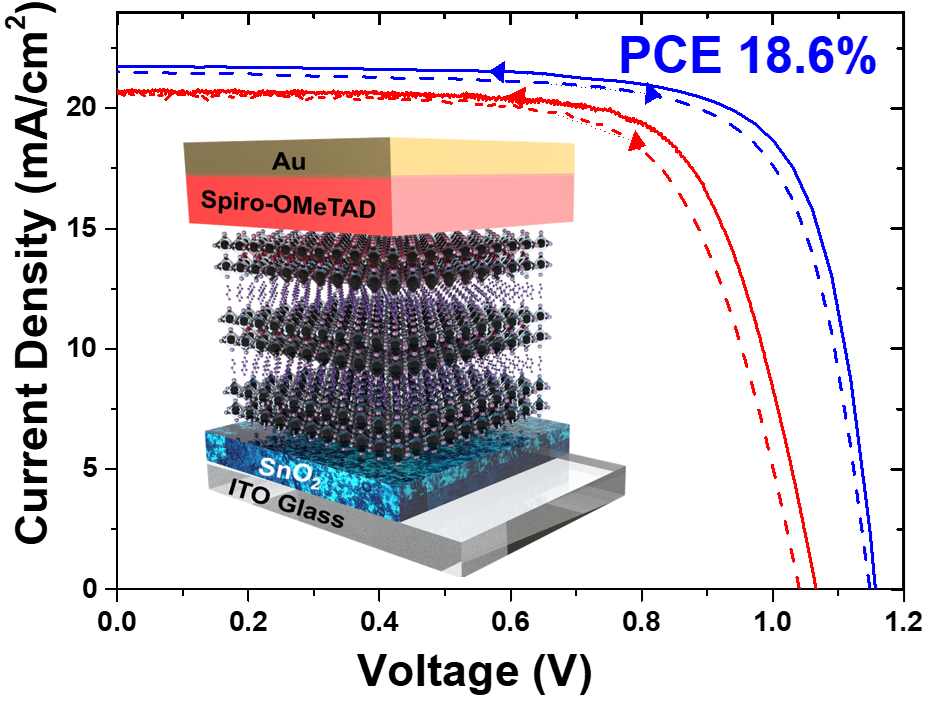Prof. Ziyi Ge’s group at the Ningbo Institute of Materials Technology and Engineering (NIMTE) of Chinese Academy of Sciences (CAS) developed a conjugated structure of two-dimensional (2D) perovskites that could alleviate the quantum confinement effect in general 2D structures and thus improve the photovoltaic efficiency of perovskite solar cells (PSCs). The study was published in Nano Energy.
2D perovskite system has attracted significant attention, thanks to its tunable optoelectronic characteristics and outstanding environmental durability. However, quantum wells (QWs) of 2D perovskites severely restrain the charge transfer between organic/inorganic layers, leading to the significantly poorer photovoltaic performance of 2D PSCs compared with their 3D analogues.
To address this issue, the researches at NIMTE innovatively designed the D-A-D (D: donor; A: acceptor) type organic cation as 2D spacer to intrinsically refine the QW structures of 2D perovskites for less quantum confinement.
In this case, the push-pull effects between D, A unit endows the organic spacer intramolecular charge transfer characteristic, which effectively narrows its bandgap. Thus, the resulting 2D perovskites demonstrates the flattened energy landscape of the QWs, which suppresses the charge transfer barrier and elongates the carrier diffusion lengths in 2D perovskite films.
Such QW feature not only contributes to weaker quantum confinement and lower exciton binding energy of 2D perovskites, but also precludes the formation of lower-bandgap recombination centers in the high-n perovskite films, which have been acknowledged as an unsolved puzzle for 2D perovskite materials.
Based on such design, the 2D (n=4) PSCs showed an impressive power conversion efficiency (PCE) of 18.6%, which is among the highest reported values for DJ-type 2D perovskites (n ≤ 4) to date. The device also exhibits excellent moisture and light stabilities, by retaining 94% and 95% of the initial PCE under ambient atmosphere with 40-60% relative humidity (RH) after 1000 h and under continuous light illumination for 200 h, respectively.
By virtue of rational selection of other D and A unit, QW structures of 2D perovskites can be further adjusted, which may opens up huge possibilities for the development of new 2D perovskite systems.
This work was financially supported by the National Key Research and Development Program of China (No. 2017YFE0106000), National Science Fund for Distinguished Young Scholars (No. 21925506), National Natural Science Foundation of China (Nos. 22005322, 51773212, 81903743), Ningbo S&T Innovation 2025 Major Special Programme (No. 2018B10055), CAS Key Project of Frontier Science Research (No. QYZDB-SSW-SYS030).

Fig. Novel 2D perovskites developed for solar cells with high PCE (Image by NIMTE)
Contact
LIU Chang
Ningbo Institute of Materials Technology and Engineering
E-mail: liuchang1@nimte.ac.cn

